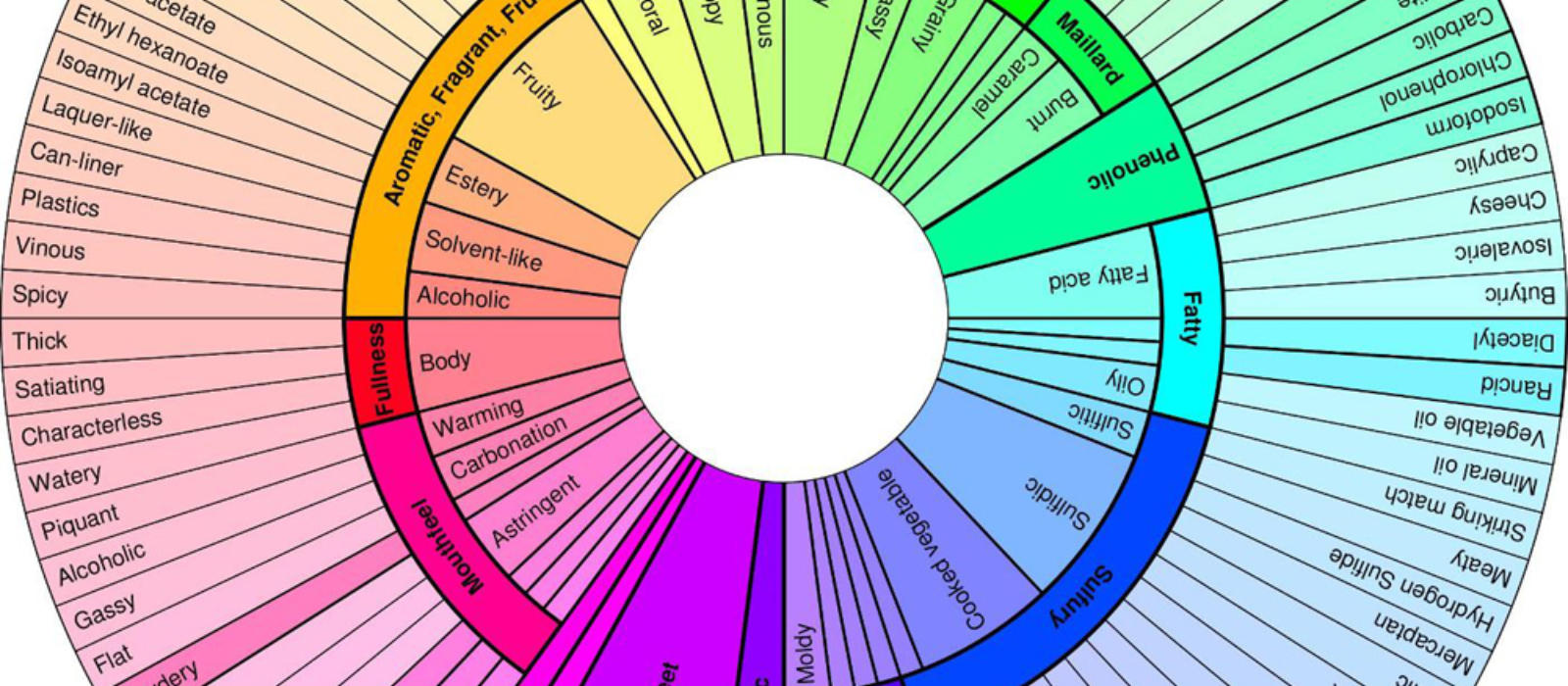Story
Flavor Wheel

We’ve all been there. You’re enjoying a glass of wine with a friend and they’re going on and on about the berries, crushed stone, cedar and peppery notes in their wine. Then you stick your nose in your glass and all you can smell in your wine is, well, wine.
But don’t fret. Tasting wine and describing its flavors and aromas is a learned skill that requires practice (all practice should be this fun) and a system.
The aromas that make wines smell like wine can indeed be dissected into aromas that are more familiar and each grape has a certain set of aromas and other characteristics that make it unique. It’s like a fingerprint for each grape. However being able to focus your senses to carefully and fully identify each of the aromas in a wine is a challenge and I often see people being overwhelmed by this and then giving up with the thought that they must simply not have the ability to do it. They weren’t born with the right nose.
How very untrue. All you need is a tool and a system to be able to get into the game. That’s why I use a flavor wheel. It’s like a color wheel, only it has varying degrees of flavors broken into categories and then subdivided into actual flavors such as tree fruit which is then subdivided into green apples, pears, red apples, etc. You can usually search out a flavor wheel online.
With the flavor wheel in hand and a glass of wine in the other, go through each subcategory and ask yourself, “does this wine smell like this?” Write down each flavor for which you thought the wine did indeed have that aroma. Don’t skip any flavor on the wheel – at first this will take a little while but at the end of it, you won’t have forgotten to smell for any particular flavor and you won’t be overwhelmed by the task because you broke it into smaller tasks.
Most likely, you’ll have a number of aromas written down whereas in the past you wouldn’t have been able to zero in on any one particular smell. The more you do this activity, the less and less you’ll need to have that flavor wheel in your hand. You’ll simply have the process memorized and before you know it, you’ll be describing wines like a pro!
Andy Chabot
Director of Food & Beverage
We’ve all been there. You’re enjoying a glass of wine with a friend and they’re going on and on about the berries, crushed stone, cedar and peppery notes in their wine. Then you stick your nose in your glass and all you can smell in your wine is, well, wine.
But don’t fret. Tasting wine and describing its flavors and aromas is a learned skill that requires practice (all practice should be this fun) and a system.
The aromas that make wines smell like wine can indeed be dissected into aromas that are more familiar and each grape has a certain set of aromas and other characteristics that make it unique. It’s like a fingerprint for each grape. However being able to focus your senses to carefully and fully identify each of the aromas in a wine is a challenge and I often see people being overwhelmed by this and then giving up with the thought that they must simply not have the ability to do it. They weren’t born with the right nose.
How very untrue. All you need is a tool and a system to be able to get into the game. That’s why I use a flavor wheel. It’s like a color wheel, only it has varying degrees of flavors broken into categories and then subdivided into actual flavors such as tree fruit which is then subdivided into green apples, pears, red apples, etc. You can usually search out a flavor wheel online.
With the flavor wheel in hand and a glass of wine in the other, go through each subcategory and ask yourself, “does this wine smell like this?” Write down each flavor for which you thought the wine did indeed have that aroma. Don’t skip any flavor on the wheel – at first this will take a little while but at the end of it, you won’t have forgotten to smell for any particular flavor and you won’t be overwhelmed by the task because you broke it into smaller tasks.
Most likely, you’ll have a number of aromas written down whereas in the past you wouldn’t have been able to zero in on any one particular smell. The more you do this activity, the less and less you’ll need to have that flavor wheel in your hand. You’ll simply have the process memorized and before you know it, you’ll be describing wines like a pro!
Andy Chabot
Director of Food & Beverage
